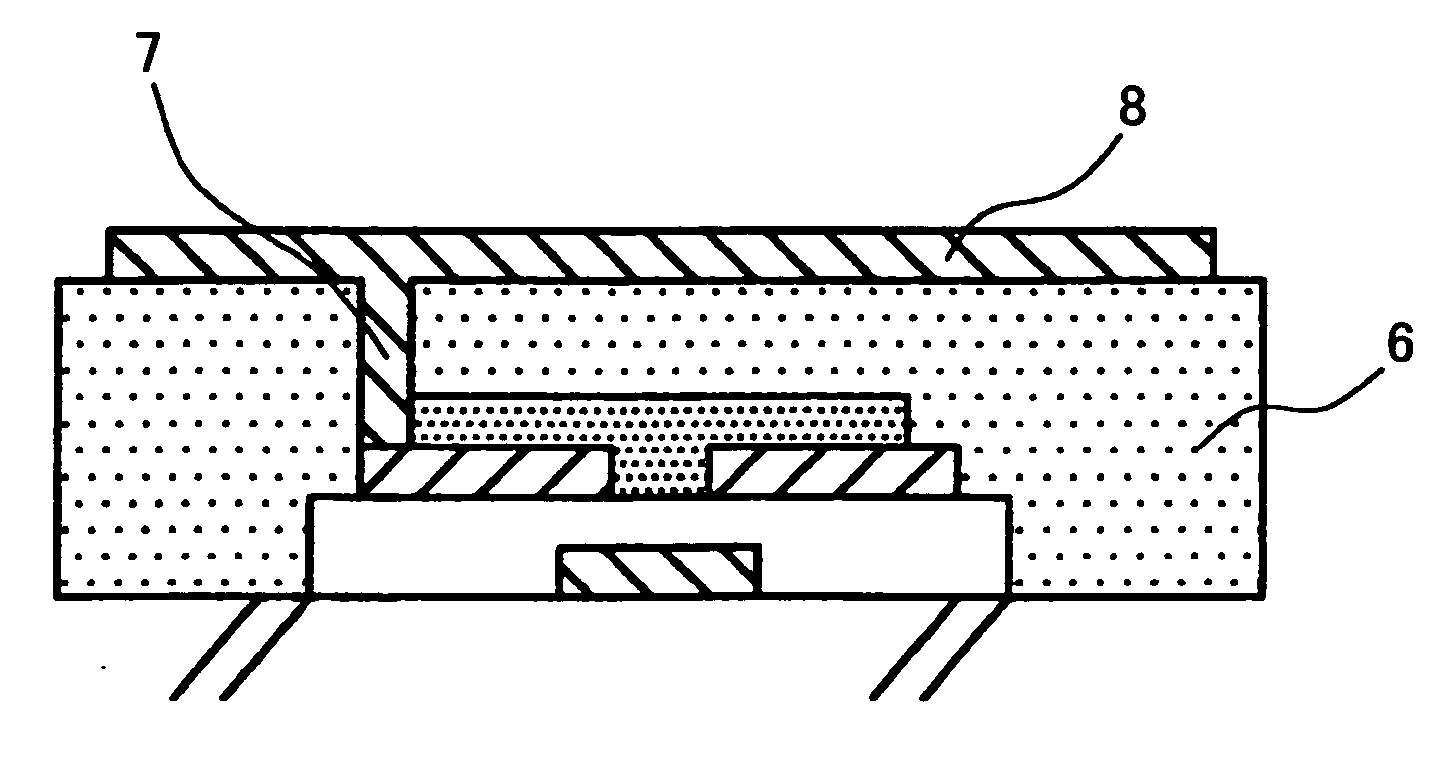Organic transistor active substrate, manufacturing method thereof, and electrophoretic display
- Summary
- Abstract
- Description
- Claims
- Application Information
AI Technical Summary
Benefits of technology
Problems solved by technology
Method used
Image
Examples
example 1
[0117] (1) Formation of Organic Transistor
[0118] Commercially available nano-silver ink was used to print a desired pattern on a glass substrate by using an inkjet device manufactured by Ricoh Printing Systems, Ltd. The pattern was heat treated at 200° C. to form the first electrode.
[0119] Next, thermal polymerization type polyimide was coated as the first insulating film by spin coating, and heat treated at 280° C. Subsequently, ultraviolet rays were irradiated to desired parts (where second electrodes are to be formed, described later) via a photomask, to modify the surface. The superposition accuracy of the photomask on the first electrode pattern was calculated, and the shift amount was within ±10 μm with respect to the total pitch of 200 mm.
[0120] Next, similar to the formation of the first electrode, nano-silver ink was used in an IJ method to form the second electrodes. The exposure part cannot recognize the pattern by CCD observation. Accordingly, the substrate was matche...
example 2
[0131] The electrophoretic display according to an embodiment of the present invention has the structure as shown in FIG. 4. Specifically, the supporting substrate 11 is disposed on the transparent electrode (ITO: Indium Tin Oxide) 10 as a common electrode. The electrophoretic microcapsules 9 for displaying black / white are sandwiched between the transparent electrode 10 and the third electrode 8 (individual electrode, pixel electrode) of the organic transistor active substrate formed by the method described in example 1. It was observed that the color displayed by the pixel change between black and white by applying a voltage of −20 V to the scanning line and applying a voltage of ±20 V to the (pixel) signal line. The electrophoretic microcapsules 9 are medium that can display black and white, and each capsule includes white particles, black particles and an insulating solvent.
[0132] The method of manufacturing the electrophoretic display is described in detail.
[0133] Titanium oxi...
PUM
 Login to View More
Login to View More Abstract
Description
Claims
Application Information
 Login to View More
Login to View More - R&D
- Intellectual Property
- Life Sciences
- Materials
- Tech Scout
- Unparalleled Data Quality
- Higher Quality Content
- 60% Fewer Hallucinations
Browse by: Latest US Patents, China's latest patents, Technical Efficacy Thesaurus, Application Domain, Technology Topic, Popular Technical Reports.
© 2025 PatSnap. All rights reserved.Legal|Privacy policy|Modern Slavery Act Transparency Statement|Sitemap|About US| Contact US: help@patsnap.com



